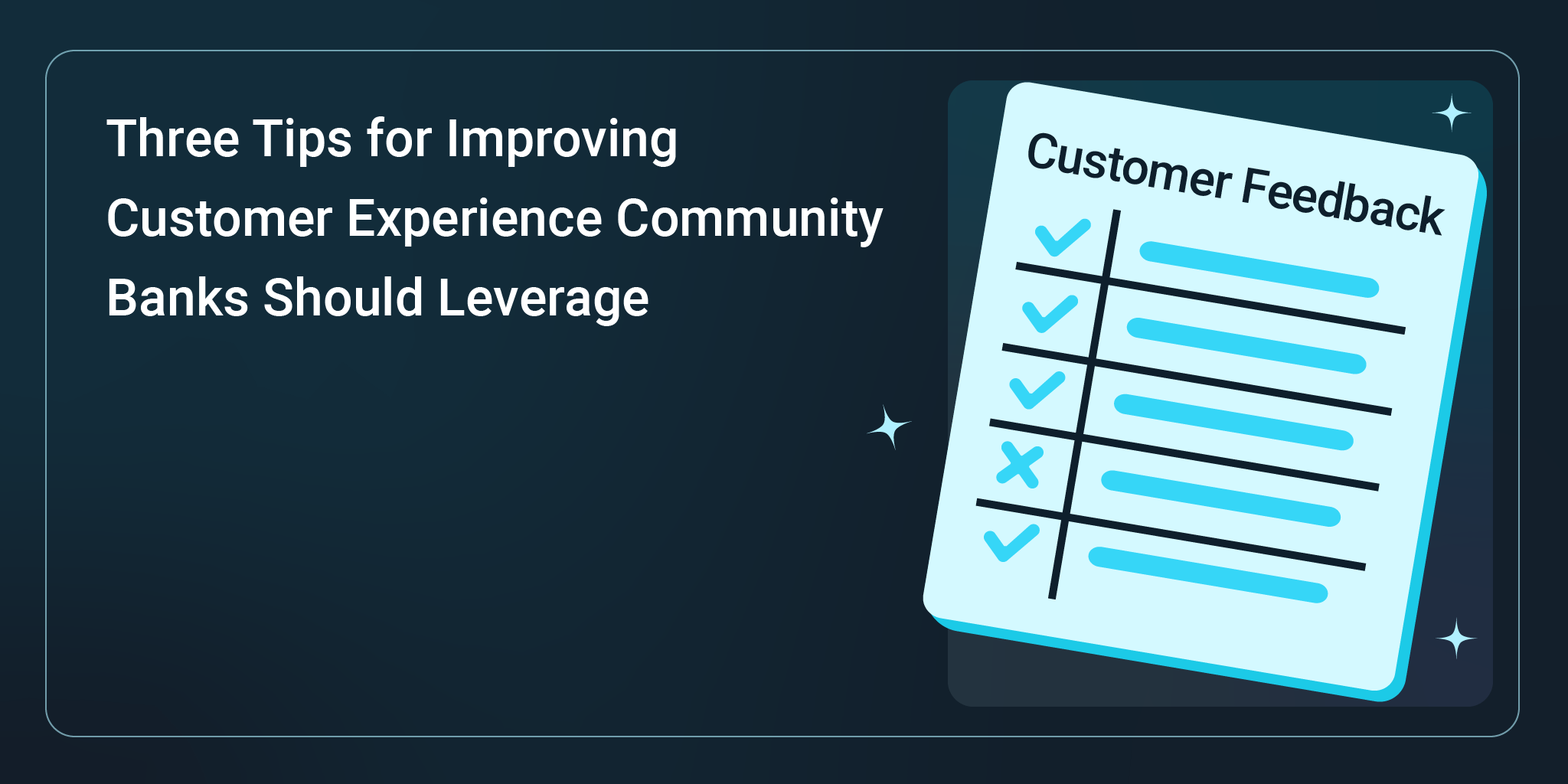Three Tips for Improving Customer Experience Community Banks Should Leverage
One concept businesses are increasingly focused on is customer experience (CX). Under this big umbrella is every interaction your customers have with your company throughout their customer lifecycle journey. It starts from when they first become aware of your brand and lasts until they can no longer be a customer.
The customer experience determines how customers feel about being your customers, how they describe their relationship with your brand, whether they recommend your business to others, and more. These sentiments can be impacted by not just current interactions, but also by factors such as previous interactions and conversations with other customers.
Since switching banks is easier than ever, creating and maintaining a customer experience that surprises and delights is critical for community banks. With that in mind, here are three tips for getting started on evaluating and improving your customer experience and increasing your customer acquisition and retention metrics:
1. Get Customer Feedback
Before you can start changing your customer experience, getting a detailed picture of how your customers feel about the status quo is important. This applies to the in-branch experience, the digital banking experience, and any other customer communication channels (email, mail, phone, text, social media, etc.)
For example, while internal stakeholders may feel that "we need a new app," this sentiment doesn't mean that customers feel the same. In fact, they may be happy with 90% of the current experience and the remaining 10% could be addressed with comparatively minor tweaks.
When soliciting customer experience feedback, don't rely on only simple surveying methods like NPS and CSAT. While these can provide useful high-level metrics and help with prioritization – for example, if your mobile app's CSAT score is 95 but your website's CSAT score is 70, that's a clear sign that the web experience is the part that needs work – they're not designed to provide the specific feedback needed to formulate a strategy.
A focused longer-form survey with specific questions will help you identify how your customers interact with your business, what they like about the experience, and what they don't like or want to see improved. Include an incentive with your long-term surveys. Something as simple as a $20 Amazon gift card offer will significantly increase response rates.
2. Analyze Behavior Data
In addition to direct customer feedback, behavior data can be leveraged to discover how customers interact with your bank. This includes data from the digital experience and the physical one, which should be combined at the customer level. In an ideal scenario, you’ll be able to plot a customer's journey from their first interaction with your brand (such as their first visit to your website) to their most recent one, including outreach touchpoints, down to the exact button, page or app screen, phone call, email, and branch visit.
Once the data is collected, you can segment it by customer type to begin uncovering customer journeys and behavior patterns, painting a picture of how prospects become customers as well as how your customers act – from your best ones to ones that churned and everyone in between – and where failure points exist.
For example, if you have a three-page account-creation process and you see that prospective customers who try to open an account online frequently abandon the process on the second page, that's a sign to review those pages. Next, you could use a user-testing service to get neutral third-party feedback on your application process to help you decide which changes to make to reduce the abandonment rate.
Alternatively, you may find that business customers who opt out of marketing communications churn at a higher rate than those who don't. In this case, you may want to create an account management strategy that positions your bank as a valuable growth partner rather than just "their bank."
3. Ensure Messaging Matches Reality
Because the customer experience starts before someone is a customer, expectations must be set appropriately in marketing materials, particularly when it comes to claims such as "white glove customer service" or "personalized lending products." Before making such promises, make sure you clearly define each and that your existing processes support it.
For example, if your website promises "white glove service," but customers can only speak to a human for support during branch business hours, that is a disconnect that has the potential to enrage a customer who has an issue at 10:30 PM on a Saturday – particularly if it's a business customer or a high-net-worth individual.
Advertising that writes checks that your bank is not able to cash (metaphorically, of course), new customers may be disappointed by the experience they have and thus more likely to churn (often without saying anything). According to research by Zendesk, over 50% of consumers will switch to a competitor after a single bad experience with a brand and 73% will switch after multiple bad experiences.
They may even leave negative reviews that damage your brand on their way out, as people do not like feeling like they've been lied to. Existing customers who see a message dissonant with their experience are also at risk of being content to potentially becoming displeased – "Wait, I'm not getting that!"
Upgrade Your Customer Experience With Torpago
We help community banks improve their customer experience by providing the infrastructure they need to offer a modern credit card program, particularly for business customers. With Torpago, community banks can quickly incorporate cutting-edge technology, from mobile applications to spend management software, into their credit program offerings. Request a demo today to learn more about Powered By and how our solutions can help grow and retain customers, loan balances, and deposits.


